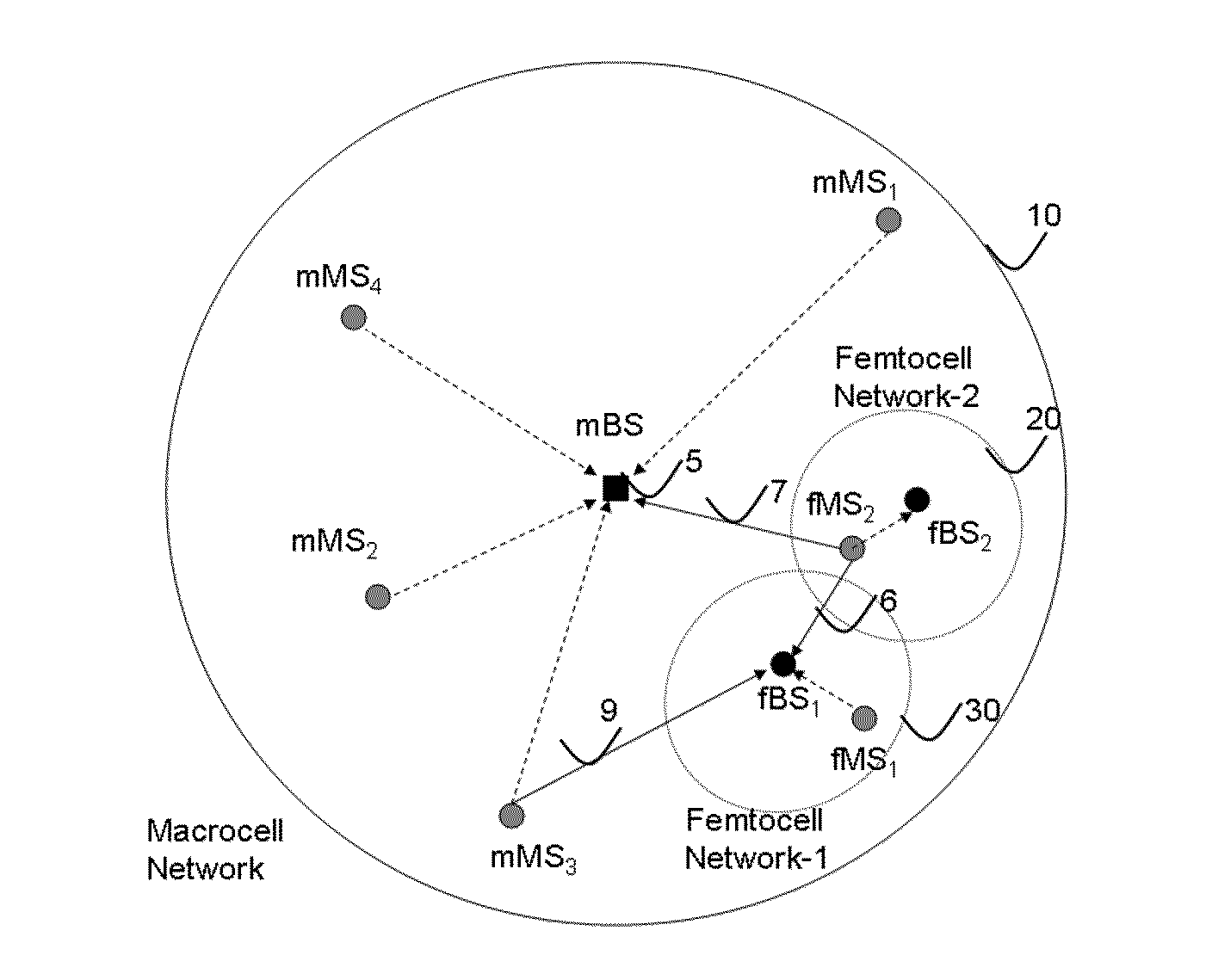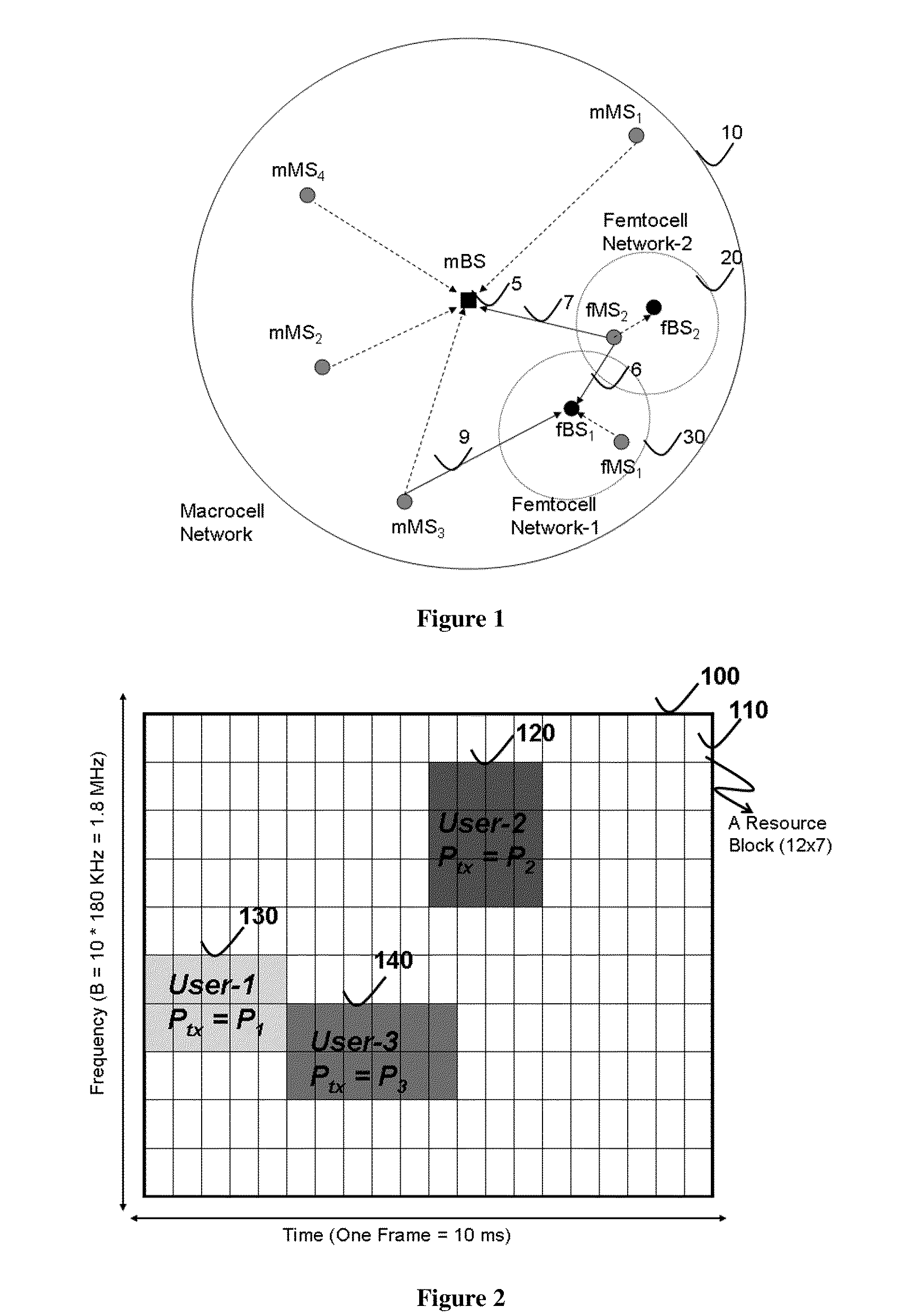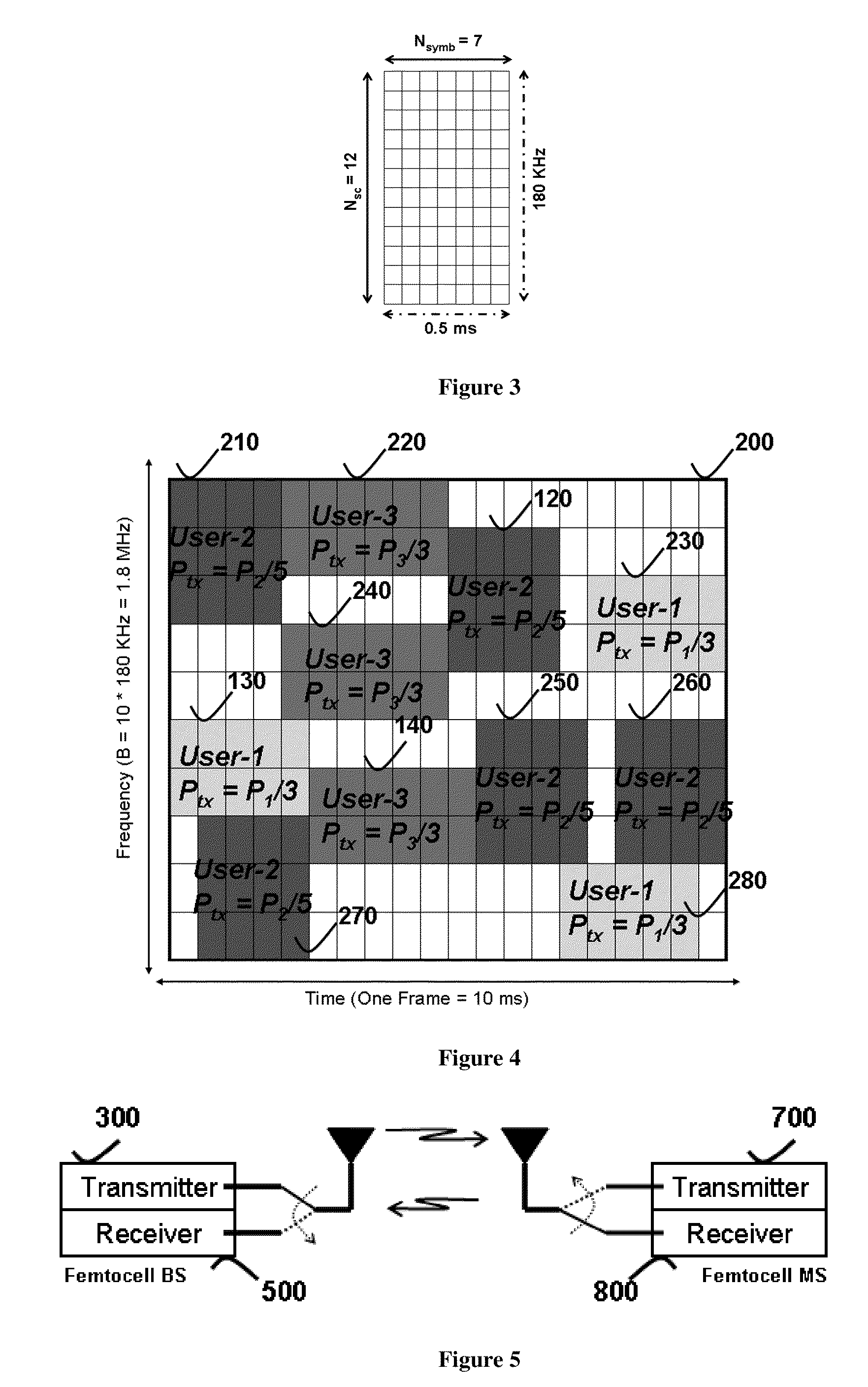Method for Time Frequency Spreading in a Femtocell Network for Interference Reduction
- Summary
- Abstract
- Description
- Claims
- Application Information
AI Technical Summary
Benefits of technology
Problems solved by technology
Method used
Image
Examples
Embodiment Construction
[0047]A femtocell network is vulnerable to both interference between it and a macrocell and between it and other femtocells. In general, assuming DL / UL synchronization between the macrocell and the femtocells, operations of the macrocell may interfere with operations in a femtocell as follows: (a) an mBS may interfere with an fMS during DL transmission; (b) an mMS may interfere with an fBS during UL transmission. Similarly, the operations of an fBS may interference with the operations in a macrocell: (a) an fBS may interfere with an mMS during DL transmission; (b) an fMS may interfere with an mBS during UL transmission. As between femtocells, (a) an fMS may interfere with a neighboring fBS during UL transmission; and (b) an fBS may interfere with a neighboring fMS during DL transmission. The present invention alleviates interference by lowering a femtocell's transmission power and spreading its transmission over the available spectrum resources. While this may cause a large amount o...
PUM
 Login to View More
Login to View More Abstract
Description
Claims
Application Information
 Login to View More
Login to View More - R&D
- Intellectual Property
- Life Sciences
- Materials
- Tech Scout
- Unparalleled Data Quality
- Higher Quality Content
- 60% Fewer Hallucinations
Browse by: Latest US Patents, China's latest patents, Technical Efficacy Thesaurus, Application Domain, Technology Topic, Popular Technical Reports.
© 2025 PatSnap. All rights reserved.Legal|Privacy policy|Modern Slavery Act Transparency Statement|Sitemap|About US| Contact US: help@patsnap.com



